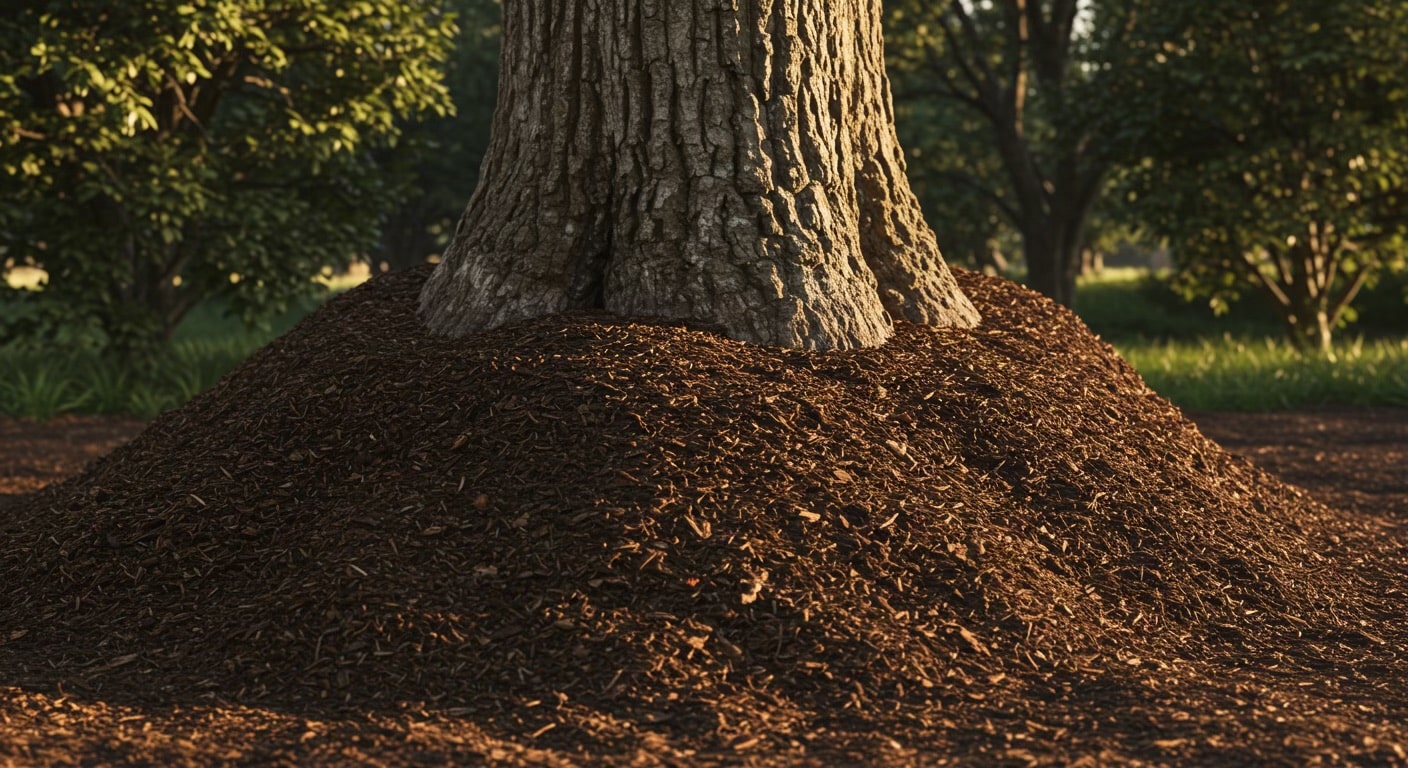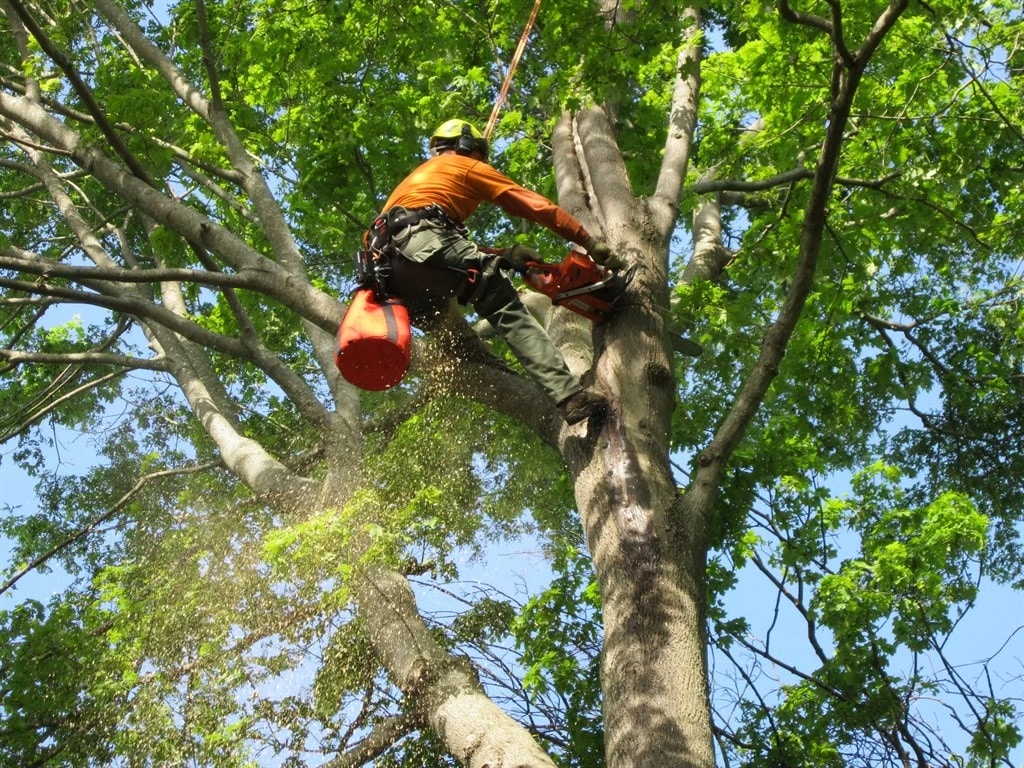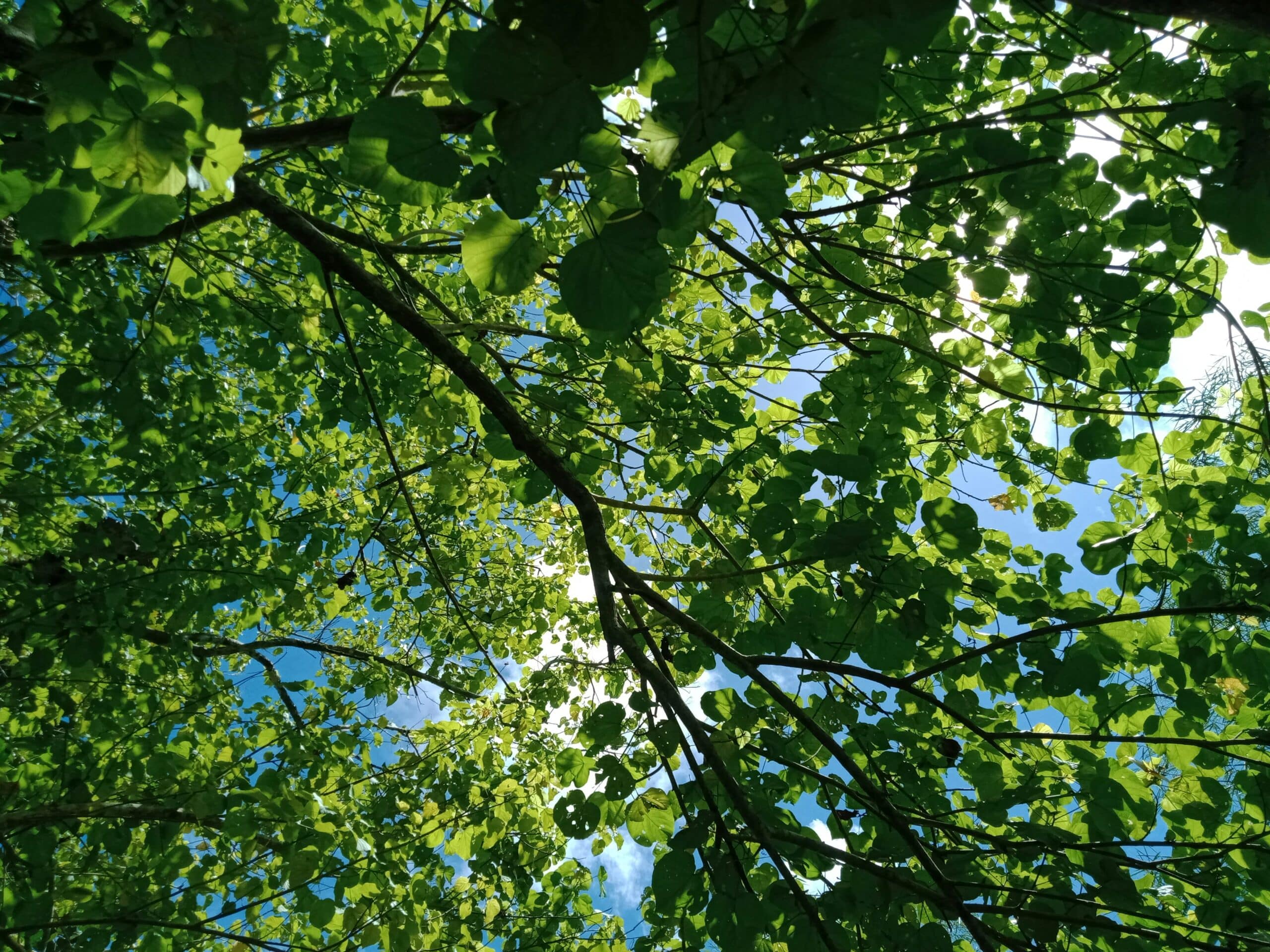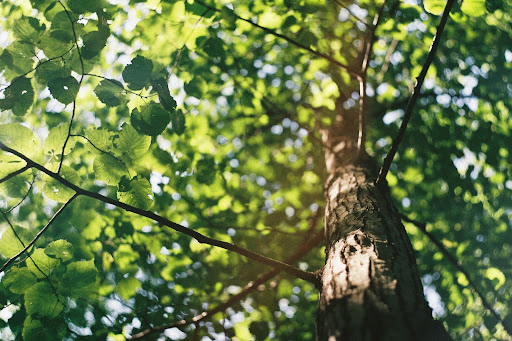
Date May 19, 2025
Category
Have you noticed mounds of mulch piled high around tree trunks in landscapes around your neighborhood? This common practice, known as “mulch volcanoes,” might look tidy to some homeowners, but it’s actually a dangerous trend that’s slowly killing trees across North Texas. At TreeNewal, we’ve seen firsthand how these innocent-looking mulch piles lead to serious health issues and premature death in landscape trees. What makes this particularly troubling is that many property owners create these mulch volcanoes thinking they’re helping their trees, when in fact, they’re doing just the opposite. This silent killer affects thousands of trees annually, but with proper knowledge and techniques, it’s entirely preventable. In this comprehensive guide, we’ll explore why mulch volcanoes form, the specific damage they cause, and how to properly mulch your trees to ensure they thrive for decades to come.
What Exactly Is a Mulch Volcano?
A mulch volcano refers to the practice of piling mulch in a cone or volcano-like shape directly against a tree trunk, sometimes reaching 6-12 inches high or more. This improper mulching technique has unfortunately become commonplace in residential and commercial landscapes alike. The trend likely began with well-intentioned landscapers trying to create a “finished” look, but the practice has spread despite being fundamentally harmful to tree health.
Mulch volcanoes typically form when fresh mulch is added year after year without removing the old layers. Over time, this creates a dense mound that retains excessive moisture against the tree bark. While proper mulching offers numerous benefits for trees, including moisture retention, temperature regulation, and weed suppression, the volcano method transforms these benefits into serious threats.
The irony is that many property owners request this style of mulching because they believe it looks more professional or that it provides extra protection for their trees. However, proper mulching should create a flat, donut-shaped ring around the tree with a gap between the mulch and the trunk – a technique that experts at TreeNewal recommend for all landscape trees in North Texas.
The Scientific Reasons Mulch Volcanoes Kill Trees
Understanding why mulch volcanoes harm trees requires looking at tree biology and how these mulch mounds interfere with natural processes. Here’s what happens beneath that seemingly innocent pile of mulch:
Bark Suffocation and Rot
Tree bark is designed to be exposed to air. When constantly covered by damp mulch, the bark cannot “breathe” properly. This constant moisture creates ideal conditions for:
- Fungal pathogens that cause bark decay
- Bacterial infections that can spread throughout the tree
- Insect infestations, particularly from species attracted to decaying matter
The bark functions as the tree’s protective layer – similar to human skin. When damaged by prolonged moisture exposure, it leaves the entire tree vulnerable to disease and decline.
Root Growth Abnormalities
Mulch volcanoes create abnormal growing conditions that confuse trees about where roots should develop:
Trunk-girdling roots can form when the tree attempts to grow roots into the mulch pile instead of outward into the soil. These roots eventually encircle the trunk, choking off the tree’s vascular system. Research from the University of Minnesota found that over 80% of trees with severe girdling roots showed significant decline within 10 years.
Trees may develop shallow root systems that can’t adequately anchor the tree or access deeper water sources. As explained in our guide on why trees and shrubs fail to establish, proper root development is critical for long-term tree health and stability.
Vascular System Disruption
The tree’s vascular system – which transports water, nutrients, and carbohydrates throughout the tree – can be severely compromised by mulch volcanoes:
Phloem tissue (the part that transports sugars from leaves to roots) can be damaged, effectively starving the root system. This is particularly harmful for young trees that haven’t established extensive root systems.
The cambium layer, which produces new wood and bark cells, may die under constant moisture, preventing normal trunk expansion and growth.
According to a 2019 study by the Arboricultural Research Institute, trees with mulch volcanoes showed a 35% reduction in water and nutrient transport efficiency compared to properly mulched trees.
Signs Your Tree Is Suffering From a Mulch Volcano
Identifying mulch volcano damage early can help save affected trees. Watch for these warning signs that indicate your tree is struggling:
Early Warning Indicators
The earliest signs of mulch volcano damage often include:
- Slowdown in annual growth rate
- Unusually small leaves compared to previous seasons
- Premature fall color or leaf drop in summer
- Thinning of the upper canopy (dieback starting at the crown)
These subtle changes might be dismissed as normal variation, but they often signal the beginning of serious problems.
Advanced Damage Signs
As the damage progresses, you’ll notice more obvious symptoms:
- Visible fungal growth at the base of the trunk
- Bark that appears soft, discolored, or easily flakes off
- Presence of ants, termites, or other insects in the mulch pile and trunk
- Root sprouts emerging from the trunk above the soil line
- Leaning or instability in the tree due to compromised roots
At TreeNewal, we’ve helped numerous homeowners understand how proper tree care supports ideal landscapes, which always begins with addressing fundamental issues like mulch volcanoes.
The Proper Way to Mulch Trees
Correct mulching techniques provide all the benefits without any of the risks. Follow these guidelines to properly mulch your trees:
The 3-3-3 Rule for Perfect Mulching
Professional arborists follow a simple guideline called the 3-3-3 rule:
- Maintain 3 inches of space between the mulch and the tree trunk (creating a “donut hole” around the trunk)
- Apply mulch at a depth of 3 inches maximum
- Extend the mulch ring at least 3 feet from the trunk (ideally to the drip line for mature trees)
This approach ensures proper moisture balance, temperature regulation, and weed suppression without creating conditions for disease or root problems.
Selecting the Right Mulch Materials
The type of mulch matters almost as much as how you apply it:
Organic mulches like wood chips, shredded bark, or pine straw are ideal as they gradually break down and add nutrients to the soil. Research from Texas A&M Forest Service shows that organic mulches can improve soil structure and increase microbial activity by up to 400% compared to bare soil.
Avoid using artificial or dyed mulches in direct contact with the soil around trees. These products may contain chemicals that can interfere with soil biology and nutrient cycling.
At TreeNewal, we often recommend mulches that complement the natural soil chemistry in North Texas. For trees that benefit from slightly acidic conditions, mulches containing fulvic and humic acids can provide additional support for nutrient uptake and root development.
How to Fix Existing Mulch Volcanoes
If you’ve identified mulch volcanoes in your landscape, take these steps to correct the situation:
Step-by-Step Remediation
- Remove all mulch that contacts the tree trunk, creating a 3-6 inch gap around the base
- Carefully pull back excess mulch to achieve a maximum depth of 3 inches
- Check for any fungal growth or decay on the exposed trunk and roots
- Look for and carefully prune away any circling roots growing into the mulch (consult an arborist for significant root issues)
- Redistribute the mulch in a flat, even layer extending outward from the trunk
- Water thoroughly to help the tree adjust to its new conditions
This process should be done carefully to avoid further stress to the tree. For valuable or severely affected trees, consulting with a certified arborist from TreeNewal can ensure proper remediation.
Recovery Timeline
Recovery from mulch volcano damage depends on how long the problem existed and the tree’s overall health:
- Young trees with recent mulch volcanoes (less than 1 year) often recover quickly, showing improved growth within one season
- Trees with moderate damage may take 2-3 years to fully recover
- Trees with severe damage, including significant rot or girdling roots, may require special interventions including root collar excavation
Remember that proper tree planting from the beginning helps avoid these issues entirely. When trees are correctly planted and maintained from the start, they establish stronger root systems and greater resilience.
Common Myths About Mulching Trees
Several persistent myths contribute to the prevalence of mulch volcanoes:
Myth: More Mulch Equals More Protection
Many homeowners believe that a thicker layer of mulch provides better insulation and protection. While mulch does help moderate soil temperature, excessive amounts create more problems than benefits. Research shows that 2-3 inches of mulch provides optimal temperature regulation without creating the moisture-retention issues of deeper applications.
TreeNewal arborists regularly educate clients about how proper mulching works alongside other practices to prevent frost damage and drought stress without creating conditions for disease.
Myth: Mulch Should Cover the Trunk Base
This dangerous misconception drives most mulch volcano creation. The belief that covering the trunk base “protects” the tree contradicts basic tree biology. Tree trunks evolved to interact with air, not soil or mulch. No tree in nature grows with its trunk buried in organic matter.
The reality is that tree trunks and root flares need exposure to air circulation. Covering these areas creates an entirely unnatural condition that trees simply aren’t adapted to handle.
The Long-Term Costs of Improper Mulching
The financial and environmental impacts of mulch volcanoes extend far beyond aesthetics:
Financial Implications
Replacing a mature landscape tree can cost thousands of dollars:
- A 15-20 year old shade tree typically costs $1,500-$3,000 to remove
- Replacement with a similar-sized tree can cost $2,000-$5,000
- Lost property value from removed mature trees can reach $10,000 or more per tree
Prevention through proper mulching costs nothing extra but saves these potential expenses.
Environmental Impact
Mature trees provide significant environmental services:
- A 30-year-old tree captures approximately 48 pounds of carbon dioxide annually
- The same tree produces enough oxygen for two human beings
- Trees reduce urban heat islands by up to 10 degrees through shade and transpiration
When mulch volcanoes lead to premature tree death, these benefits are lost for decades until new trees can mature.
FAQ: Mulching Questions Answered
How often should I replace the mulch around my trees?
Most mulch should be refreshed annually or when the layer thins to less than 1 inch. Rather than adding new mulch on top of old, rake out the old mulch first, then apply a fresh layer maintaining the proper 3-3-3 proportions. This prevents buildup that leads to mulch volcanoes.
Can I use grass clippings or leaves as mulch around trees?
Fresh grass clippings aren’t ideal as they can mat down, block water penetration, and sometimes generate heat as they decompose. However, composted grass clippings or shredded leaves make excellent mulch when applied correctly. At TreeNewal, we recommend alternating layers of leaves and wood chips for optimal soil health benefits.
Will removing a mulch volcano damage my tree’s roots?
When done carefully, removing a mulch volcano causes less harm than leaving it in place. Work gradually using hand tools rather than power equipment, and avoid cutting any roots encountered during removal. For trees with severe root issues, TreeNewal can perform professional root collar excavation to safely expose the trunk without harming critical roots.
Do all trees benefit from the same mulching techniques?
While the basic principles remain consistent, certain species have specific preferences. For example, trees native to arid regions may benefit from slightly wider mulch-free zones around the trunk, while trees adapted to forest understories may thrive with slightly deeper organic mulch. When planting the right tree in the right place, consult with an arborist about species-specific mulching recommendations.
How does TreeNewal approach mulch volcano remediation?
TreeNewal takes a comprehensive approach to fixing mulch volcanoes, beginning with careful mulch removal techniques that minimize stress on the tree. Our certified arborists assess trunk damage, root issues, and soil conditions before implementing a recovery plan that may include fungicide treatments, root pruning, and soil amendments to help restore tree health. We also provide ongoing care recommendations to prevent future problems.
Protect Your Landscape with Proper Mulching
Mulch volcanoes are a widespread but preventable mistake that can silently shorten the life of your landscape trees. While they may appear tidy, these mounds trap moisture, invite disease, and disrupt natural root development—leading to long-term decline or even death. By learning and applying proper mulching techniques like the 3-3-3 rule, homeowners can safeguard their trees and improve the health and appearance of their entire landscape.
At TreeNewal, our ISA Certified Arborists help North Texas property owners correct harmful mulching practices and support tree health through proactive, science-based care. Whether you’re refreshing your mulch or addressing years of buildup, we’re here to help you do it right.
Contact TreeNewal today at (817) 329-2450 or submit a request online to schedule a consultation. Let us help you protect your trees, preserve your landscape, and avoid the costly consequences of improper mulching.









